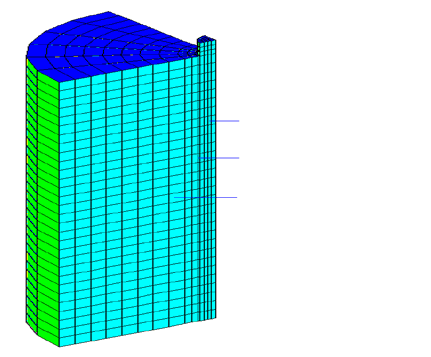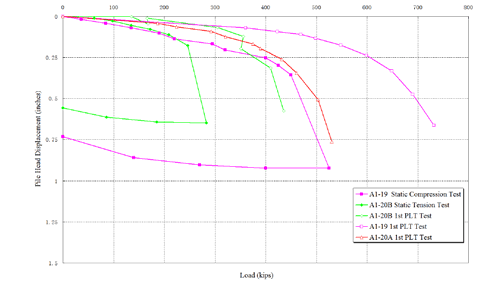This project was started in year 5 as a result of issues that arose during the seismic retrofit on the Berkeley Campus and it is aimed at developing a better understanding of the axial response of pier foundations under seismic loading. The traditional methods used for the evaluation of axial capacity of deep foundations under dynamic loading lead to extremely conservative and costly foundations. The conservativeness of the foundation design translates into increased demands on the structure itself and, hence, very costly structural systems. Test with direct evaluation of the dynamic axial response on the Berkeley Campus and at other sites in the S.F. Bay area showed a significant increase in the predicted axial stiffness and axial capacity of deep foundation elements over traditional design methods. As a result at Berkeley, the net savings to the Berkeley Campus were over $500K on one project alone. The objective of this research is twofold:
- to develop an numerical model for axial response of drilled piers; and
- to use the existing field test data and the results of numerical analyses to develop axial capacity and axial deformation relationships for different site conditions for use in PBEE.
The initial part of the project consisted of observing the dynamic pile load tests performed as a part of a site investigation for seismic retrofit on the Berkeley Campus. The results of these tests were interpreted in traditional fashion in order to compare the results of the dynamic tests with the results of conventional static tests and with capacities that would have been predicted using traditional site characterization techniques: SPT and CPT. The next, current, stage of the project is the development of a finite element model to analyze the dynamic pier-soil interaction and to calibrate the model with observed data.
The research effort during the first year of this project (Year 5) concentrated on analyzing the results of the field tests and on the development of the finite element model. The plot below illustrates the difference in observed axial capacity of proto-type drilled piers at a stiff soil site on the Berkeley. As can be seen from the plot, the axial capacity of the drilled piers from dynamic tests is roughly 50% higher and the axial stiffness is as much as 4 times greater than obtained from static tests.
The challenge is to develop a numerical model that reasonably reproduces this observed behavior and the apparent strain rate effect, in particular. The behavior of pile subjected to axial dynamic loading is a three-dimensional, nonlinear, transient problem. The nonlinearity of pile-soil system has two aspects: the most significant nonlinear behavior for a pile is concentrated along the pile-soil interface, and the other is the nonlinear stress-strain behavior of soils. Due to the complexity of the system and its high computational requirement, the applications of three dimensional finite element method for such an analysis are quite limited. An example of the finite element mesh needed to model this particular configuration of soil and pier is shown below.

Figure
2.
Larger View
We expect to use the OpenSees framework to develop (adapt and implement) an elastoplastic interface element model that could appropriately capture soil-pile interface behavior. Large-scale finite element simulation will be performed, verified and calibrated with our field pile load tests. Key components in the simulation will be identified. We hope to make correlations with various design criteria and propose a simplified performance based design method.
The numerical model calibration will be completed in Year 6. Modeling of the actual site conditions and the development of recommendations for simplified predictive approach suitable for PBEE will be performed in Year 7.
- Progress report: End of Year 6
- Final report: End of Year 7
